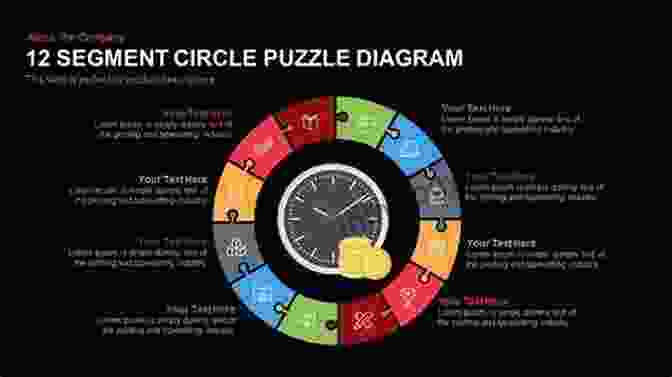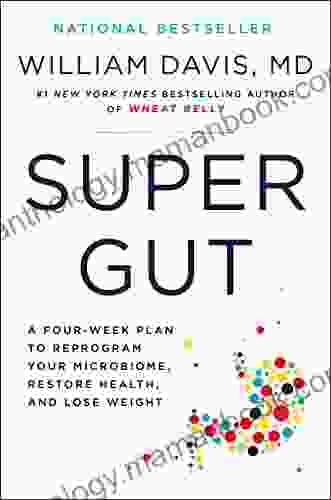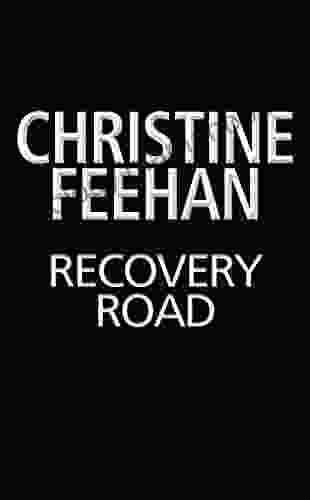Plotting Your Novel with the Plot Clock: A Comprehensive Guide for Writers

As a writer, crafting a compelling and well-paced novel requires a solid understanding of plot structure. The Plot Clock, developed by Ronald Tobias, is an invaluable tool that can help you achieve this. This comprehensive guide will introduce you to the Plot Clock, its components, and how to apply it effectively to create an engaging and unforgettable story.
What is the Plot Clock?
The Plot Clock is a visual representation of the plot's progression, divided into 12 segments that correspond to different key events or plot points. It serves as a roadmap for your story, ensuring a logical flow of events and a satisfying .
4.4 out of 5
| Language | : | English |
| File size | : | 5999 KB |
| Screen Reader | : | Supported |
| Print length | : | 234 pages |
| Lending | : | Enabled |

The 12 Plot Points of the Clock
- Opening Image: Sets the scene and introduces the main character.
- Theme Stated: Explores the story's central theme or conflict.
- Set-Up: Provides background information, establishes character relationships, and builds tension.
- Catalyst: Triggers the main conflict or event that sets the plot in motion.
- Debate: Internal struggle faced by the protagonist as they weigh their options.
- Break into Two: Midpoint of the story where the plot splits into two distinct paths.
- B Story: Introduces a subplot related to the main plot and adds complexity.
- Fun and Games: Light-hearted or comedic moments that provide a break from the tension.
- Midpoint: Major turning point in the plot that signifies the beginning of the resolution.
- Bad Guys Close In: The antagonist's actions intensify, increasing the conflict.
- All Is Lost: A moment of despair where the protagonist faces seemingly insurmountable challenges.
- Dark Night of the Soul: The protagonist confronts their flaws and finds inner strength.
- Break into Three: Climax of the story, where the conflict reaches its peak and the resolution begins.
- Finale: Final confrontation and resolution of the conflict.
How to Use the Plot Clock
1. Start with a Strong Opening Image
The opening image is the hook that draws your readers in. Make it vivid, intriguing, and indicative of the story's theme.
2. Clearly State Your Theme
Early in the story, explicitly or implicitly state the theme or central conflict. This will give your readers a framework for understanding the plot's progression.
3. Build Tension and Introduce Conflict
Use the set-up phase to establish character dynamics, motivations, and obstacles. Gradually increase the tension leading up to the catalyst, the inciting incident that sets the plot in motion.
4. Explore the Protagonist's Internal Struggles
The debate phase allows you to explore the protagonist's inner thoughts, motivations, and conflicting desires. This will make them relatable and add depth to their character.
5. Utilize the Midpoint to Shift the Plot
Break into Two is the turning point of the novel, where the plot splits into two distinct paths. Introduce new subplots, characters, or challenges to keep the story engaging and unpredictable.
6. Provide a Moment of Light-Heartedness
The fun and games segment offers a brief respite from the tension. Use humor or light-hearted moments to add balance to the story and keep readers entertained.
7. Raise the Stakes and Intensify the Conflict
As the plot progresses, the bad guys should intensify their actions, creating greater obstacles for the protagonist. This will build suspense and drive the story towards its climax.
8. Create a Moment of Despair and Reflection
At the all is lost point, the protagonist faces seemingly insurmountable challenges. This is a crucial moment for character growth and self-discovery.
9. Empower Your Protagonist with Inner Strength
The dark night of the soul allows the protagonist to confront their flaws, reflect on their journey, and find inner strength to overcome adversity.
10. Bring the Plot to Its Climax and Resolve the Conflict
Break into Three is the climax of the story, where the central conflict reaches its peak and the resolution begins. Ensure that the climax is satisfying and aligns with the story's theme.
11. Provide a Satisfying
The finale is the culmination of the plot, where the conflict is resolved and the story comes full circle. Leave your readers with a sense of closure and a lingering impact.
The Plot Clock is an invaluable tool for structuring your novel's plot, creating compelling twists, and engaging your readers from start to finish. By understanding the 12 key plot points and applying them effectively, you can craft a well-paced and unforgettable story that will leave a lasting impression.
Remember, the Plot Clock is a guide, not a rigid formula. Adjust it as needed to fit your unique story and vision. Embrace the flexibility of this tool and let it inspire you to create a captivating and unforgettable novel.
4.4 out of 5
| Language | : | English |
| File size | : | 5999 KB |
| Screen Reader | : | Supported |
| Print length | : | 234 pages |
| Lending | : | Enabled |
Do you want to contribute by writing guest posts on this blog?
Please contact us and send us a resume of previous articles that you have written.
 Top Book
Top Book Novel
Novel Fiction
Fiction Nonfiction
Nonfiction Literature
Literature Paperback
Paperback Hardcover
Hardcover E-book
E-book Audiobook
Audiobook Bestseller
Bestseller Classic
Classic Mystery
Mystery Thriller
Thriller Romance
Romance Fantasy
Fantasy Science Fiction
Science Fiction Biography
Biography Memoir
Memoir Autobiography
Autobiography Poetry
Poetry Drama
Drama Historical Fiction
Historical Fiction Self-help
Self-help Young Adult
Young Adult Childrens Books
Childrens Books Graphic Novel
Graphic Novel Anthology
Anthology Series
Series Encyclopedia
Encyclopedia Reference
Reference Guidebook
Guidebook Textbook
Textbook Workbook
Workbook Journal
Journal Diary
Diary Manuscript
Manuscript Folio
Folio Pulp Fiction
Pulp Fiction Short Stories
Short Stories Fairy Tales
Fairy Tales Fables
Fables Mythology
Mythology Philosophy
Philosophy Religion
Religion Spirituality
Spirituality Essays
Essays Critique
Critique Commentary
Commentary Glossary
Glossary Bibliography
Bibliography Index
Index Table of Contents
Table of Contents Preface
Preface Introduction
Introduction Foreword
Foreword Afterword
Afterword Appendices
Appendices Annotations
Annotations Footnotes
Footnotes Epilogue
Epilogue Prologue
Prologue Nadria Tucker
Nadria Tucker Allen Lyne
Allen Lyne Woody Guthrie
Woody Guthrie B A Shapiro
B A Shapiro Mia Collins Parker
Mia Collins Parker Inna Rothmann
Inna Rothmann Jennifer Lynn Barnes
Jennifer Lynn Barnes Megan Derr
Megan Derr April Laugh
April Laugh Christine Feehan
Christine Feehan Casey Hill
Casey Hill Fernanda Young
Fernanda Young Beth Macy
Beth Macy Alta Graham
Alta Graham Mark E Russinovich
Mark E Russinovich William Davis
William Davis L T Ryan
L T Ryan H Beam Piper
H Beam Piper J M Farkas
J M Farkas Marcia Mccormack
Marcia Mccormack
Light bulbAdvertise smarter! Our strategic ad space ensures maximum exposure. Reserve your spot today!

 Carlos FuentesThe Ultimate Guide to Healthy Eating for Toddlers: Meal Planner and Recipes
Carlos FuentesThe Ultimate Guide to Healthy Eating for Toddlers: Meal Planner and Recipes
 George R.R. MartinFour Week Plan to Reprogram Your Microbiome, Restore Health, and Lose Weight
George R.R. MartinFour Week Plan to Reprogram Your Microbiome, Restore Health, and Lose Weight
 Julio Ramón RibeyroMaia Kobabe: Exploring Gender Identity and Queerness in a Genre-Bending...
Julio Ramón RibeyroMaia Kobabe: Exploring Gender Identity and Queerness in a Genre-Bending...
 Fyodor DostoevskyGetting Started With Arduino Michael Shiloh: A Comprehensive Guide for...
Fyodor DostoevskyGetting Started With Arduino Michael Shiloh: A Comprehensive Guide for... Marvin HayesFollow ·12k
Marvin HayesFollow ·12k Edward ReedFollow ·19.5k
Edward ReedFollow ·19.5k Griffin MitchellFollow ·18.8k
Griffin MitchellFollow ·18.8k Dwight BellFollow ·17.3k
Dwight BellFollow ·17.3k Austin FordFollow ·14.8k
Austin FordFollow ·14.8k José MartíFollow ·15.8k
José MartíFollow ·15.8k Shannon SimmonsFollow ·9.1k
Shannon SimmonsFollow ·9.1k Blake BellFollow ·17.2k
Blake BellFollow ·17.2k

 Vernon Blair
Vernon BlairThe Woman I Met in My Dream: An Unforgettable Night of...
As the veil of night...

 Carlos Fuentes
Carlos FuentesThe Ultimate Guide to Healthy Eating for Toddlers: Meal...
As a parent of a...

 Peter Carter
Peter CarterInside My Autistic Mind: A Journey of Self-Discovery and...
Autism spectrum disorder (ASD) is a...

 Isaac Asimov
Isaac AsimovA Journey Through Jane Austen's Literary Masterpieces:...
Jane Austen, the renowned English...

 Hank Mitchell
Hank MitchellAdvancements in Textiles: Science and Technology by...
The textile...

 Troy Simmons
Troy SimmonsRecovery Road: An Odyssey of Hope and Redemption by...
Recovery Road is a...
4.4 out of 5
| Language | : | English |
| File size | : | 5999 KB |
| Screen Reader | : | Supported |
| Print length | : | 234 pages |
| Lending | : | Enabled |




